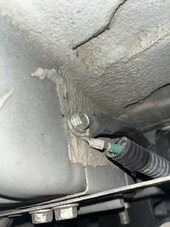rpgonzalez
New Member
I have a Winnebago Solis camper van (promaster). The ground to chassis is 8 feet long and terminated away from the battery bank. There is all sorts of metal, chassis and frame between the lithium battery bank and the spot where the ground cable is connected to the frame. Nothing else is sharing that ground bolt, the batteries aren’t grounded anywhere else and everything I’ve ever heard is to make that ground cable as short as possible. Yet the designers at Winnebago found a purpose to make it that long (Stretching to the opposite side of the van and then all the way back). Everything else is done as cheap as possible… Why would they waste 8 feet of 1ga copper? Can I move it closer? (the real reason for this question!)
Last edited:



